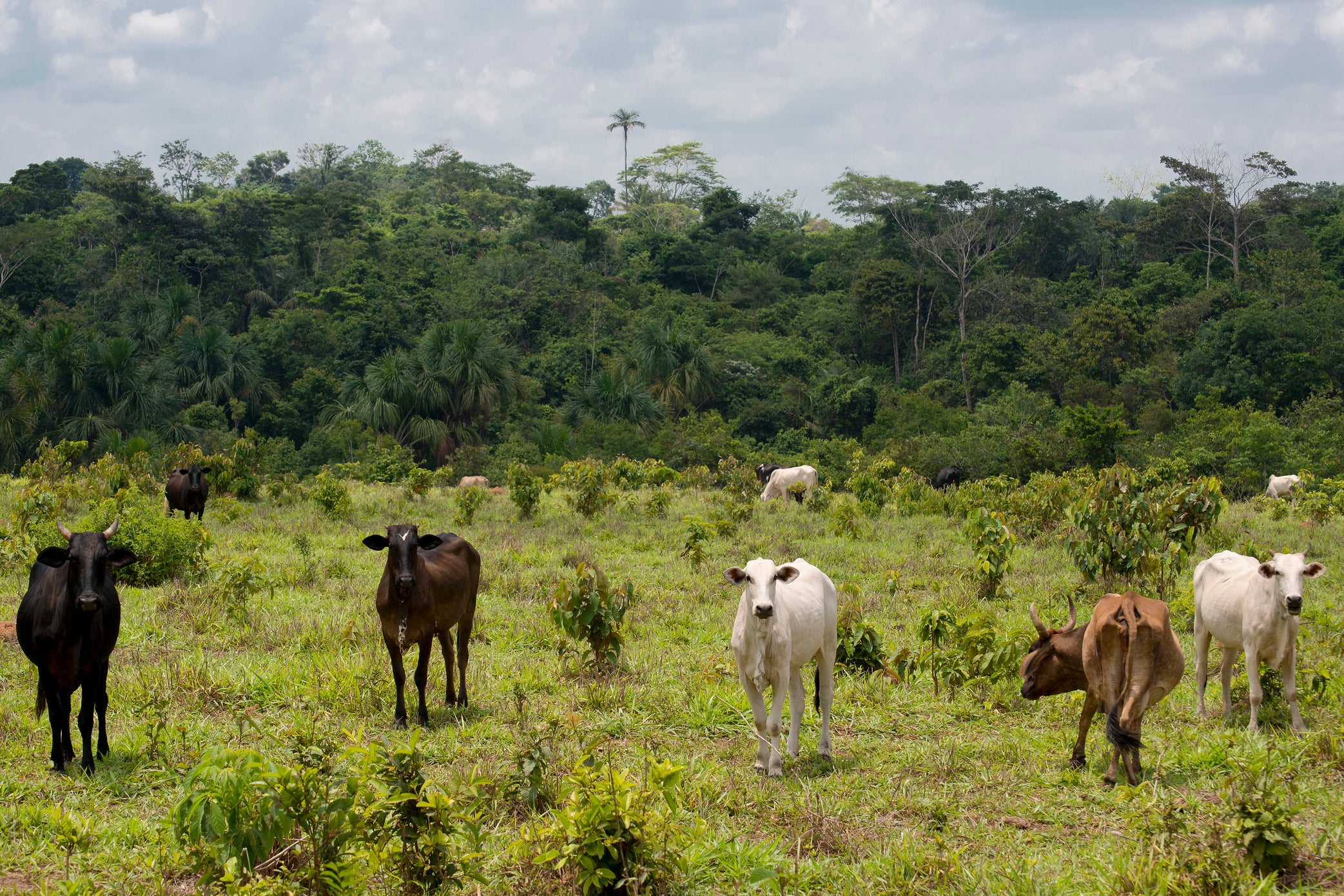Climate crisis: World must hit ‘peak meat’ by 2030 and restore vegetation on grazing land, scientists say
Countries should implement policies to reduce livestock, diversify food production and return land to nature, researchers urge

Your support helps us to tell the story
From reproductive rights to climate change to Big Tech, The Independent is on the ground when the story is developing. Whether it's investigating the financials of Elon Musk's pro-Trump PAC or producing our latest documentary, 'The A Word', which shines a light on the American women fighting for reproductive rights, we know how important it is to parse out the facts from the messaging.
At such a critical moment in US history, we need reporters on the ground. Your donation allows us to keep sending journalists to speak to both sides of the story.
The Independent is trusted by Americans across the entire political spectrum. And unlike many other quality news outlets, we choose not to lock Americans out of our reporting and analysis with paywalls. We believe quality journalism should be available to everyone, paid for by those who can afford it.
Your support makes all the difference.A vast restoration of natural vegetation on land currently used for meat production is the “best option” for removing CO2 from the Earth’s atmosphere, and must begin immediately, scientists have warned.
Levels of meat production must peak within the next 10 years and land must begin to be reforested if we are to avoid tipping “various Earth systems into unstable states”, researchers wrote in an open letter to the Lancet Planetary Health journal. All other methods of CO2 removal remain “untested at scale”, they said.
Cattle and sheep herds require enormous tracts of land, not only for pasture, but also for the grains grown to feed the intensively reared animals.
Furthermore, their digestive processes result in high methane emissions, which is a potent greenhouse gas.
As of 2017, according to the Intergovernmental Panel on Climate Change (IPCC), the atmosphere must not absorb more than 420 billion more tonnes of CO2, and approximately 720 billion tonnes of CO2 must be removed from the atmosphere, for us to have a chance of limiting global warming to 1.5C.
We are not on course to meet these demands, however. “If the livestock sector were to continue with business as usual, this sector alone would account for 49 per cent of the emissions budget for 1.5C by 2030,” the scientists said.
“Since the first Intergovernmental Panel on Climate Change assessment report in 1990, the production of meat, milk, and eggs increased from 758 million tonnes to 1,247 million tonnes in 2017, and is projected to further increase.”
The researchers are now calling on “high-income and middle-income” countries to incorporate four measures to keep them in line with the aims of the Paris climate agreement:
-
declare a timeframe for peak livestock;
-
identify the largest livestock emissions sources and/or largest land occupiers, and set appropriate reduction targets for production;
-
implement policies to diversify food production by replacing livestock with sustainable foods that maximise public health benefits – mainly pulses (including beans, peas, and lentils), grains, fruits, vegetables, nuts, and seeds;
-
and adopt a “natural climate-solutions approach” where possible, to repurpose land as a carbon sink by restoring native vegetation cover.
The scientists added: “We propose that, in creating Paris-compliant agriculture sectors, high-income and middle-income countries do not outsource their livestock production to other countries, and instead reduce demand for livestock products.”
Earlier this year, the UK government’s then-chief environment scientist, Sir Ian Boyd, warned that people must eat less red meat, travel less and buy fewer clothes, and he also called for the creation of a “net zero ministry”, which he said could work across government to vet the policies of all departments to ensure they are working to a common environmental framework.
This week, academics at the University of Gottingen released research that forecasts how calorific intake could change between 2010 and 2100, and estimates that global food demands could rise by 80 per cent by the end of the century.
Join our commenting forum
Join thought-provoking conversations, follow other Independent readers and see their replies
Comments